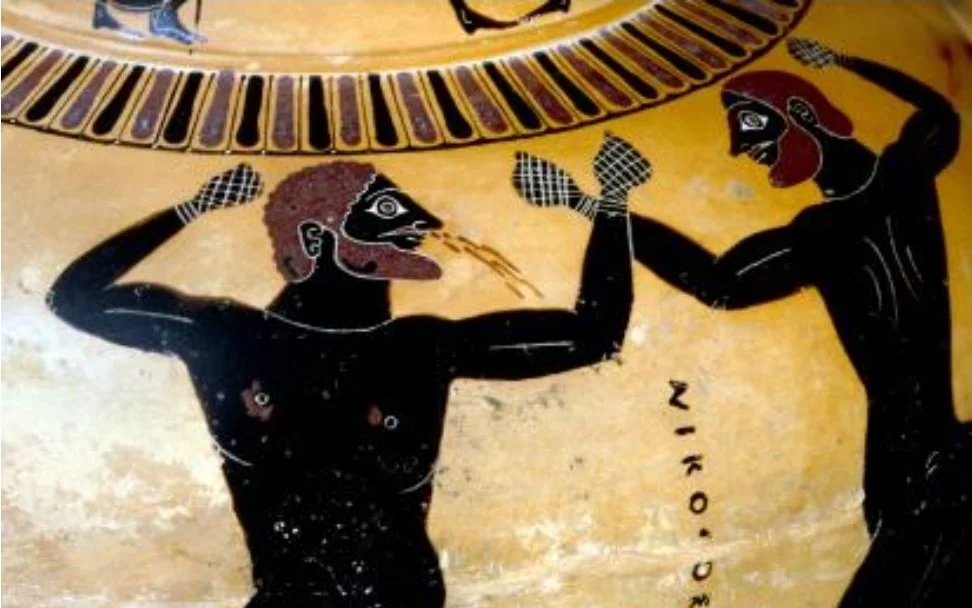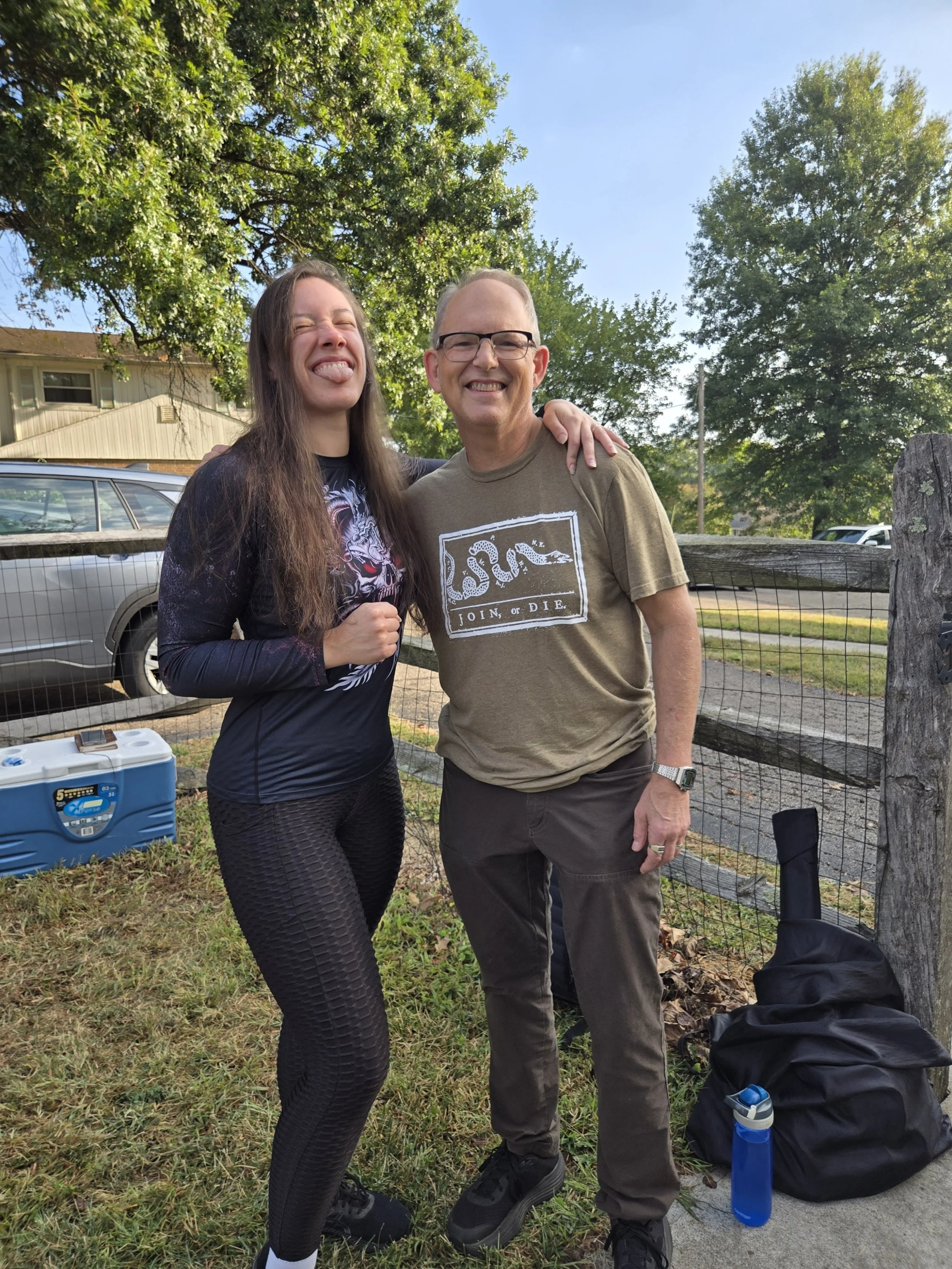Click here to sign up for daily motivational text messages!
...
Click here to sign up for daily motivational text messages! ...
Mettle maker #488: Liberation
If you get bored, you’ll give up. So all hail variety, right? But on the other hand, you need to have goals — things you’d like to achieve. Aren’t those two things at odds though? I mean, if you want to get good at anything, don’t you need to do it over and over? If you want to get big muscles, don’t you have to squat and bench press consistently and often?
Well, if you listen to the best strength coaches, like Dan John for example, variety and consistency fit together like peanut butter and chocolate.
an amazing feat
At age 64, an ice delivery man named August Johnson hammer-gripped the cloth top of a money bag filled with 32 lbs. of coin and carried it 1 mile without putting it down or letting it touch his body. This feat has never been duplicated.
Case in point: the last time I made a run at world class grip strength, my grip did improve. But I also got medial epicondylitis (“golfer’s elbow”) that took months to heal. Ultimately I gave up on the dream. Recently though, inspired by the incomparable, record-breaking grip master John Brookfield (inventor of Battle Ropes) and smacked in the head by the recent achievements of Emil Abrahamsson, I have decided to take another run at it — at age 64.
The results have been pretty miraculous. In just a couple of months I’ve increased my grip by about 50%.† How? With a heaping helping of variety. I have 8 different training blocks which I cycle through in sequence, training grip about 6 days/week. And every evening I do grip health exercises involving mobility and isometrics.
In variety you will find liberation: liberation from boredom, injury, stagnation, and misery. You will also find liberation in the gospel reading below, by the way. Here is the training session I did Saturday morning, in which you will find a great deal of variety.
12/13/25 Training Session
Notes: “Failure” means the point at which form ceases to be perfect. Training to actual failure results in injury. Also, pacing is key on resistance exercises. All reps are with explosive contraction and slow expansion (3-4 secs) with full range of motion and full stop at the end of each rep. A set of 12 reps should take at least 48 seconds. No junk reps. Form is king.
Fight Ready Protocol (~10 mins)
2 Rounds of dog kicks (~10 mins)
Body toughening with shot bag and striking stones (~10 mins)
Day A Resistance training (1 of 6 A through D) : Isometric Back Squat 3 x 10 secs, Plank Row 45° 1 set to failure Incline Push-ups, 2 sets to failure, Hanging Knee Raise 3 sets to failure, Barbell Curl, 2 sets to failure, Isometric Kickback 3x10 secs, DB Seated Press, 2 sets to failure (~15 mins)
Grip Strength, Day D (1 of 8, A through H): Pinch Grip Deadlift, Fat Bar Deadlift, Sword from Stone 1-hand Deadlift, Titan’s Telegraph Key pinch grip tool. 2 sets to failure of each (~20 mins)
Neck Strength, Day E (1 of 5, A through E). Crunches and extensions with weight plate, 2 sets of each to failure.
Body Weight Farmer Walks, 1 set to failure (~2 mins)
800 meter run (I never run more than this — too hard on the knees — walking is safer) (~5 mins)
Total time: ~ 90 minutes
Give this one a try and let me know how it goes!
† Using rep counts with various Ironmind grippers, and this online calculator, my 1RM has increased by 50%.
Want to fight like an old-timer? Click here to sign up today for our distance learning program! In other news, the new t-shirts are in. If you want to make a donation to the charity, we can definitely get you one! Just click here.
Holy Eucharist is LIVE on YouTube every Sunday at 10 am EASTERn. Click HERE to watch live. To view and print a copy of the program for holy Eucharist, CLICK HERE.
Homily for the Third Sunday of Advent, 12/14/25 – Father Mitch
Readings: Isaiah 35:1-6a, 10, Psalm 146:6-7, 8-9, 9-10, James 5:7-10, Matthew 11:2-11
Matthew 11:2-11 World English Bible
2 Now when John heard in the prison the works of Christ, he sent two of his disciples 3 and said to him, “Are you he who comes, or should we look for another?”
4 Jesus answered them, “Go and tell John the things which you hear and see: 5 the blind receive their sight, the lame walk, the lepers are cleansed, the deaf hear,* the dead are raised up, and the poor have good news preached to them.* 6 Blessed is he who finds no occasion for stumbling in me.”
7 As these went their way, Jesus began to say to the multitudes concerning John, “What did you go out into the wilderness to see? A reed shaken by the wind? 8 But what did you go out to see? A man in soft clothing? Behold, those who wear soft clothing are in kings’ houses. 9 But why did you go out? To see a prophet? Yes, I tell you, and much more than a prophet. 10 For this is he, of whom it is written, ‘Behold, I send my messenger before your face, who will prepare your way before you.’* 11 Most certainly I tell you, among those who are born of women there has not arisen anyone greater than John the Baptizer; yet he who is least in the Kingdom of Heaven is greater than he.”
Today, brothers and sisters, we walk full force into the power of Christ. Maybe you don’t feel it. Perhaps this reads like an historical anecdote about Jesus passing a message through intermediaries to John the Baptists while he’s in prison. That is not what this is.
To set us up to receive the gospel in the right frame of mind, readings have been selected for us with great care. First we read from Isaiah 35,
4 Tell those who have a fearful heart, “Be strong!
Don’t be afraid!
Behold, your God will come with vengeance, God’s retribution.
He will come and save you.
5 Then the eyes of the blind will be opened,
and the ears of the deaf will be unstopped.
6 Then the lame man will leap like a deer,
and the tongue of the mute will sing.
John the Baptist, stuck in prison and doomed to die, is not blind. He can see, as it were, the handwriting on the wall. He knows his fate. He’s not deaf. He can hear the clank of the manacles and the slamming of the prison door. He isn’t lame. He can pace his cell and wish he wasn’t inside.
But there is coming to him a great liberating message that he could not see before. There is good news coming to his ears that no ear has ever heard before. There is still a reason for John the Baptist’s heart to leap like a deer, as no heart has ever leapt before.
What is that message? From James 5 we read,
See how the farmer waits for the precious fruit of the earth, being patient with it until it receives the early and the late rains. You too must be patient. Make your hearts firm, because the coming of the Lord is at hand.
Listen everyone, this is the good news that came to John the Baptist; this is the good news that every eye should see; the good news that every ear should hear; the good news that should make every heart leap like a deer:
Every maker of every prison is a feeble and petty dictator, and every barred door of every jail is an open window. Because the Messiah has come, Christ the Lord. There is no place into which he cannot reach. There is no place so dark enough that he cannot illuminate it.
The Word, the Logos made Flesh, Jesus Christ, has entered come to earth and entered his creation. He passes through all barriers and sets all captives who believe in him free – free from the bondage of addiction, the slavery of greed and lust, the chains of fear of death, and the confinement of despair. A physical prison can hold a body in this world but cannot prevent a repentant sinner from escaping into the arms of Jesus, or prevent safe passage into life everlasting!
Now then – imagine how the heart of John the Baptist leapt when he heard this good news, and let your heart leap too!
This is the good news — rejoice and be free!






























































